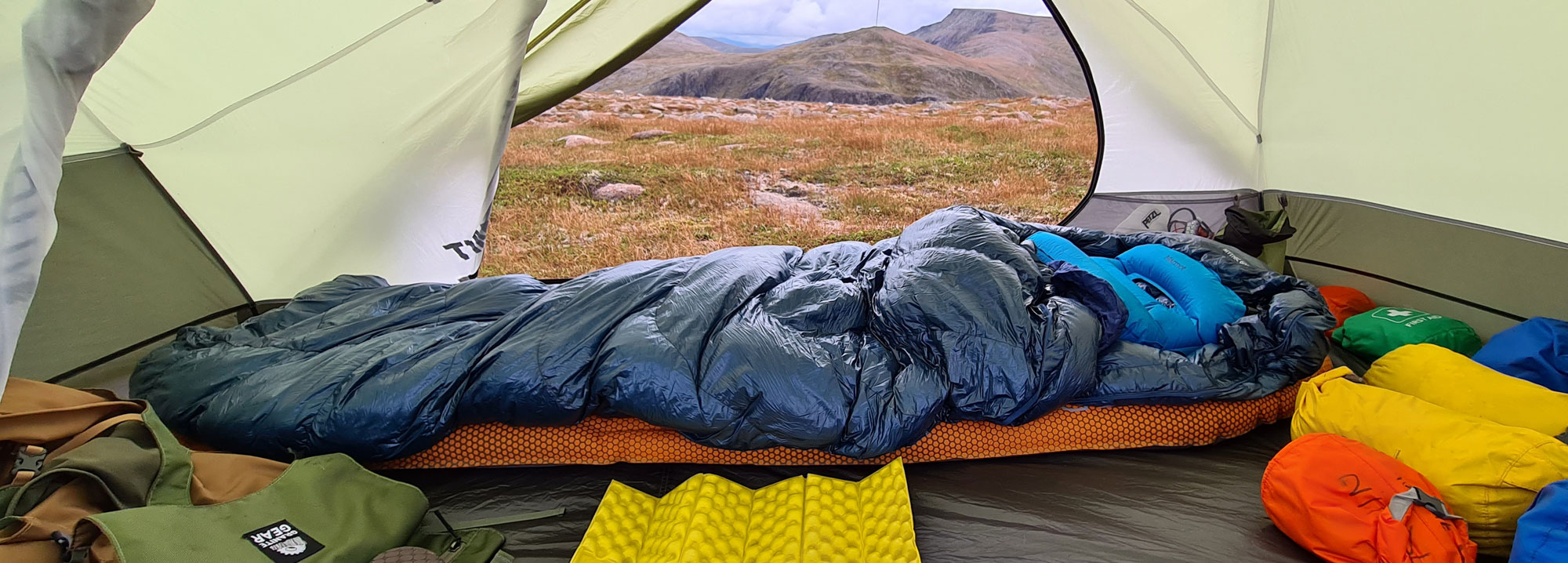Basecamp Guru - Sleeping Bag Construction and Features
Nov 18, 2019

UNDERSTANDING SLEEPING BAG CONSTRUCTION AND FEATURES
Zips - Most sleeping bags are fitted with a full-length zip that runs the length of the bag almost to the foot. These zips usually have a slider at each end, allowing you to ventilate the bag from the foot end if it's too warm for the conditions. Some manufacturers make bags with zips on either the left or the right-hand side. A left-hand zip is by your left hand as you lie in the bag on your back. A left-hand zip is suited to a right-handed person as the right arm comes across the body to unzip it, whereas using the left hand to unzip a left-handed zip would be trickier. Some manufacturers only make bags with left-hand zips. Some bags don't have any zip at all to save weight, these are difficult to get in and out of. Some bags have a short zip on the side or top of the bag - again this feature saves weight. Access in and out of the bag is fine but it does not give any options to vent the bag at the bottom. Recently we have seen full length zips set slightly on the top of the bag rather than on the side - these seem easier to use. Baffles - Where there is a zip this is a potential cold spot, so, apart from very lightweight bags designed for summer use, most zips are insulated using a baffle - this is a down filled strip which sits across the zip eliminating it as a cold spot. Some higher spec bags have a double zip baffle. Sleeping bags intended for use in colder conditions will also have a shoulder baffle, this enables you to fasten the bag around your shoulders without necessarily closing up the hood. This prevents draughts and stops air circulating out of the bag taking the warmth with it. Quilting Methods - This refers to how the down compartments are constructed. Compartments are needed to keep the down in place, otherwise it would all migrate to the bottom of the bag.
Rectangular versus Mummy shapes - Most sleeping bags you will see on our website are Mummy shaped, this is because a close-fitting bag will be warmer for a given weight because there is less volume of air to move around carrying heat away with it, and a close-fitting bag weighs less than other shapes because there is no waste of material. Some people feel too restricted by a mummy bag and would rather carry a bit more weight and have a sleeping bag with lots of room in it. Rectangular or Tapered bags offer the user more room to move around and often the bag completely unzips around the feet so that it can be used as a quilt rather than a sleeping bag. Often tapered bags don't have a hood - as the focus is less on maximum heat for minimum weight, and more on comfort and freedom to move around. Quilt - A flat quilted cover that offers complete freedom of movement when sleeping. The danger here is from draughts, and you need a warm sleeping mat to insulate you from the ground. Shell Fabrics - Some sleeping bags have highly water-resistant shell fabric, this reduces the risk of down getting wet from external water, but also reduces breathability. A common fabric used is Pertex Endurance. These bags are ideal for bivying when there is a higher likelihood that your sleeping bag could get wet. If you normally use a tent though it's not thought necessary as it should be possible to keep your bag dry. Waterproof Sleeping Bags - Crux Torpedo bags are made with a highly waterproof and highly breathable eVent fabric outer, with taped seams. These are specialist bags for extreme wet conditions. Backless Sleeping Bags - these rely on your sleeping pad to keep your underside warm and they usually feature some method of attaching them to the pad, either a sleeve or straps. This construction means all the down is concentrated on the top and sides of the bag so none is crushed on the bottom rendering it useless as an insulator. Because of the format of the EN testing backless bags can't be tested in the same way as other bags, therefore there are no ratings for them. However by comparing the Fill Weight and Fill Power of the down, and remembering that its all on the top and sides, its possible to infer a rating. Backless designs are fine if you are fairly still in the night - If you toss and turn a lot draughts can be a problem. |
